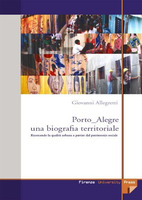La variazione semantica del verbo essere nelI'italiano parlato
| dc.contributor.author | Alessandro, Panunzi | |
| dc.date.accessioned | 2010-08-02 00:00:00 | |
| dc.date.accessioned | 2020-04-01T15:28:29Z | |
| dc.date.available | 2020-04-01T15:28:29Z | |
| dc.date.issued | 2010 | |
| dc.identifier | 347510 | |
| dc.identifier | OCN: 808383418 | en_US |
| dc.identifier.uri | http://library.oapen.org/handle/20.500.12657/34869 | |
| dc.description.abstract | The book proposes a corpus-driven study conducted on 14,000 occurrences of the verb to be in the corpus of spoken Italian C-ORAL-ROM, in the light of the main proposals for semantic interpretation of the verb. This puts to the test the very possibility of developing a study with a strong theoretical connotation on a significant mass of oral data, generally not very prone to a systematic taxonomic treatment. Thus the observable datum defines the explicandum of the linguistic reflection and the analysis of the corpus guarantees the observational adequacy in relation to the data of real production. The results proposed illustrate how the broad semantic variation in the use of the verb proves to be divided into widely comprehensive macroclasses: copular uses (attributive), identificative uses and predicative uses on locative basis. Within each of these categories we can observe principal lines of variation that are consistent and productive. | |
| dc.language | Italian | |
| dc.subject.classification | thema EDItEUR::C Language and Linguistics::CF Linguistics | en_US |
| dc.subject.other | italian | |
| dc.subject.other | lingua italiana | |
| dc.title | La variazione semantica del verbo essere nelI'italiano parlato | |
| dc.type | book | |
| oapen.abstract.otherlanguage | Il volume propone uno studio corpus driven condotto sulle 14.000 occorrenze del verbo essere nel corpus di parlato italiano C-ORAL-ROM, alla luce delle principali proposte di interpretazione semantica del verbo. Viene così messa alla prova la possibilità stessa di realizzare una ricerca fortemente connotata in senso teorico su una grande mole di dati orali, in genere poco inclini ad un trattamento tassonomico sistematico. Il dato osservabile definisce quindi l'explicandum della riflessione linguistica e l'analisi su corpus ne garantisce l'adeguatezza osservativa rispetto ai dati della produzione reale. I risultati proposti evidenziano che l'ampia variazione semantica nell'uso del verbo risulta strutturata in macroclassi ampiamente comprensive: gli usi copulari (attributivi), gli usi identificativi e gli usi predicativi a base locativa. All'interno di ognuna di tali classi si riscontrano linee di variazione precipue, coerenti e produttive. | |
| oapen.identifier.doi | 10.26530/OAPEN_347510 | |
| oapen.relation.isPublishedBy | bf65d21a-78e5-4ba2-983a-dbfa90962870 | |
| oapen.identifier.ocn | 808383418 |

